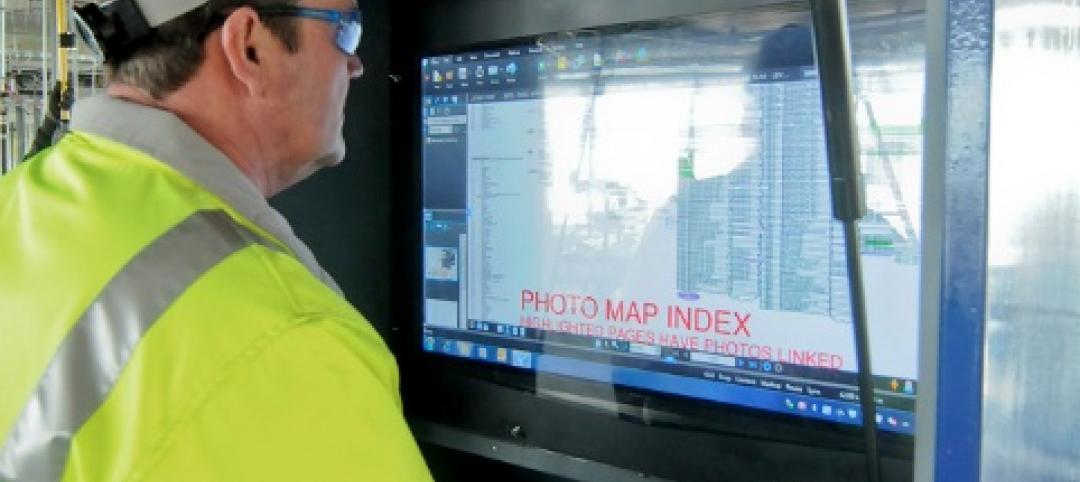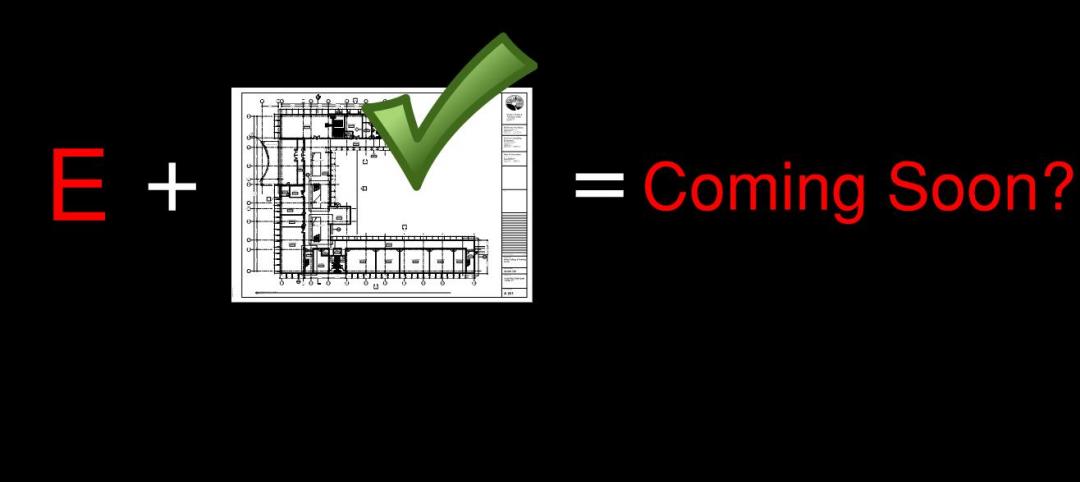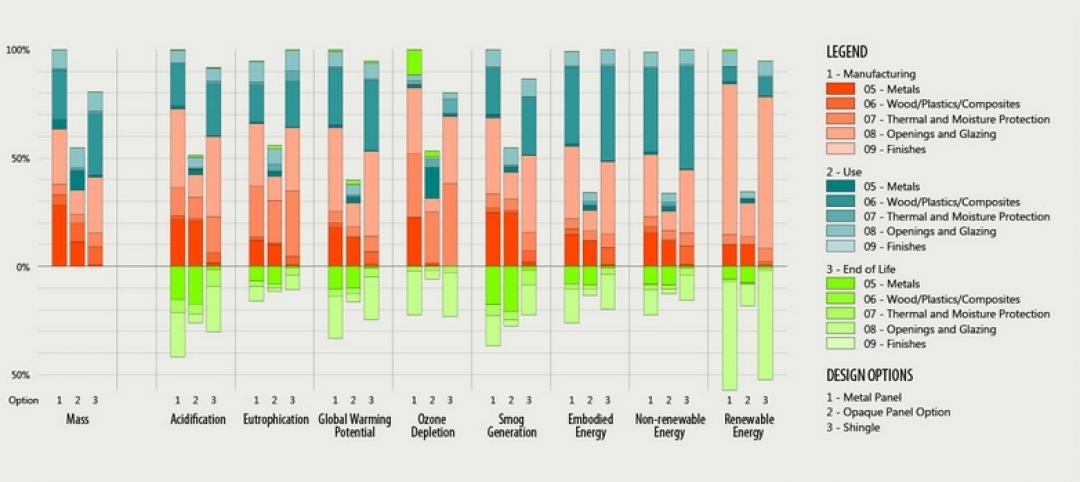The venerable portable document format (created in 1993 by Adobe Systems), an open standard since 2008, has evolved well beyond the simple document format it was created to be.
Today’s PDFs encapsulate a complete description of a fixed-layout 2D document that includes the text, fonts, images, and 2D vector graphics that comprise their root documents. Thanks to advances in 3D technology PDFs can now have 3D drawings embedded within them. They can even support Flash animations.
However, the question must be asked: How do these advances benefit AEC firms? AEC users have long relied on PDFs for large sheet sets and documents necessary to create their projects. As AEC firms augment their workflows from 2D to 3D, the PDF is not being abandoned. It is just being augmented for 3D.
“People are using PDF for real work,” said Don Jacob, VP of engineering at Bluebeam Software. “We’re seeing users employing it for punch lists, recording status during construction (completed or not completed), and operations matters.”
Bluebeam is taking its flagship PDF creation and editing software beyond 2D workflows with its new version, Bluebeam PDF Revu 9. I tried out the various Revu 9 programs for a month and a half in Bluebeam’s beta period.
The recently released software includes navigating-embedded 3D images and editing 3D models through a simple form tool. A premium edition, Bluebeam PDF Revu extreme, includes such features as OCR to make scanned PDFs text-searchable, forms creation, and scripting. Bluebeam has released new versions of its Standard and CAD versions of Revu 9, too, with batch processing of AutoCAD sheetsets and a new VisualSearch. Its search capabilities go far beyond simple text-only search and allow users to search for markings.
Revu 9 Standard: Now with a view
The big news with Revu 9 Standard is the viewing of 3D files. Bluebeam incorporated several ways to work with a 3D PDF. You can control it with your mouse or navigate your model through a toolbar; discrete views (for example, piping, structural) are also available in a dropdown menu. It’s a robust 3D viewer that lets you decide how you want to use it.
I found Revu 9 Standard ($179 per seat) to be a very stable 3D viewer. Built as a .NET application with managed memory code, the 3D viewer in Revu 9 is not susceptible to the crashing behavior that plagues some other 3D PDF viewers.
With .NET, memory is managed by Windows itself, which does a good job of following how much memory you’re using. This is preferable to letting the application write to memory sectors it shouldn’t be writing to, which can result in crashes. I experienced no crashes during my trial run. The application’s code is also written to allow GPU acceleration, so if you have a graphics card that supports it, the 3D viewer really sings when accelerated.
Using the multiple views available from the 3D panel, you can isolate the sections of a model you want to look at simply by highlighting them. If for some reason you want to come back to a certain section down the road, you can take a snapshot of that 3D model and paste it (in flattened form) into a 2D PDF for downstream use.
The second big advance in Revu 9’s standard edition is VisualSearch. Bluebeam PDF Revu has always had the ability to search a PDF for text. Now you can search visually. Click the VisualSearch radio button from the Search menu and it gives you a rectangle to select markings, symbols, or anything in the PDF that is not text. It will then show you all instances of that symbol in your plans. This PDF-searching tool is believed to be the first searchable symbol capability ever created for the format.
In addition to giving you a quick way to find symbols, Bluebeam also added the ability to apply annotations or hyperlinks to search results. This affords the opportunity to turn this information over to consultants and contractors further downstream.
Finally, Bluebeam has added the ability to measure for takeoffs with cutouts from its measurement tool. One of the concerns Bluebeam heard from AEC users was what if you’re measuring an area that’s cut out, such as a kitchen island, you couldn’t block off a place for it. The new measurement capability recognizes lossless vector information so it can give you accurate measurements. The new cutout tool lets you cut out sections and it will give you accurate square footage with that part of the still lossless data removed from the overall area. It’s a small but very useful improvement for architects and engineers.
One other enhancement to the mark-up tools: If your drawing has an area with two or more items that need to be called out, you can now put more than one leader on a call-out. Not earth-shattering, but worthwhile.
Revu 9 CAD: More control over output
The CAD edition ($239 per seat) incorporates all the features of the standard edition, along with one-click PDF creation and batch PDF creation from AutoCAD, Revit, and SolidWorks. Using Revu 9 CAD’s improved AutoCAD plug-in, for instance, you can add a whole folder of DWGs, or select individual files within a folder of DWGs and batch process them with one click. You can change the order of files in a folder with the batch tool or individually change the layout of how your final output file will look. You can also add stamps in your final PDF file from Revu 9 CAD’s stamp editor. Revu 9 CAD gives you a lot more control to determine what your final output PDFs look like. When you add files to a batch list, you can add an entire AutoCAD sheet set to the batch.
“Sheet sets are the standard method for handling physical plots,” according to Bluebeam VP Jacob. “Bringing them into the virtual plot, PDFs, reduces that redundant workflow.” Using the batch creation capability, you can bring in a sheet set where 90% of the work has been done, change the order, and click to get the order you want without altering the existing sheet set in AutoCAD.
The CAD edition was the one I tried out for most of my review period. I found the batch tools to be simple to use and useful for more than just CAD applications. In fact, I used it to create a batch of contracts from Microsoft Word files I wanted to convert to PDF; the output worked just as fine as it did for AutoCAD DWGs.
Revu 9 eXtreme: No middle ground
Too high or too low, there’s no in-between for Revu 9 eXtreme ($299 per seat). Packing more computing wallop than a Gary Cherone vocal, eXtreme has all the features of the CAD and Standard editions and adds optical character recognition (OCR) PDF form creation for procedures such as RFIs. The eXtreme edition also adds a scripting feature for power users who want to write their own PDF editing code scripts.
The problem with many PDFs on construction sites is that at some point someone scanned them from a physical document set. That makes the file a flat image converted to a PDF, and now it’s not searchable—just a dumb 2D image with lots of words and pictures that aren’t readily accessible. With OCR the text of any PDF becomes searchable. Go to the document menu and click on OCR, type what you want to search for, and the OCR process will run over the entire image, recovering the specific data you need even if it’s been flattened.
Using Revu 9 eXtreme to create forms, you can draw in text boxes and line up form fields in the forms tool to give your document a more professional-looking feel. You can also edit existing PDF forms; for example, you can turn check boxes into radio buttons or style them any way you want.
Another good tool for forms—a feature that firms which use PDFs for punchlists requested from Bluebeam—is the ability to apply custom statuses to any mark-up. You can add text to a component (such as “accepted” or “not accepted”) for mark-ups that have been noted to be problem areas. This nice, simple feature is available in all versions of Revu 9.
With the right design software, Revu 9 is capable of delivering a potent 3D workflow to design firms and construction companies preparing to make the switch from 2D to 3D.
Jeff (“BIMBoy”) Yoders blogs on BIM, CAD, and IT issues of importance to AEC professionals and firms at www.BDCnetwork.com.
Related Stories
| Dec 10, 2013
16 great solutions for architects, engineers, and contractors
From a crowd-funded smart shovel to a why-didn’t-someone-do-this-sooner scheme for managing traffic in public restrooms, these ideas are noteworthy for creative problem-solving. Here are some of the most intriguing innovations the BD+C community has brought to our attention this year.
| Dec 9, 2013
Does technology help or hinder innovation?
Whether digital technology will help or hinder workplace insights remains a topic of ongoing debate. FastCo.Design features insights from business scholars on both sides of the issue.
| Dec 5, 2013
Translating design intent from across the globe
I recently attended the Bentley User Conference in Vejle, Denmark. I attended the event primarily to get a sense for the challenges our Danish counterparts are experiencing in project delivery and digital communication. One story I heard was from a BIM manager with Henning Larsen Architects in Denmark, who told me about a project she’d recently completed overseas in the Middle East. She outlined two distinct challenges and offered some interesting solutions to those challenges.
| Dec 3, 2013
‘BIM for all’ platform pays off for contractor
Construction giant JE Dunn is saving millions in cost avoidances by implementing a custom, cloud-based BIM/VDC collaboration platform.
| Nov 27, 2013
Exclusive survey: Revenues increased at nearly half of AEC firms in 2013
Forty-six percent of the respondents to an exclusive BD+C survey of AEC professionals reported that revenues had increased this year compared to 2012, with another 24.2% saying cash flow had stayed the same.
| Nov 25, 2013
Electronic plan review: Coming soon to a city near you?
With all the effort AEC professionals put into leveraging technology to communicate digitally on projects, it is a shame that there is often one major road block that becomes the paper in their otherwise “paperless” project: the local city planning and permitting department.
| Nov 22, 2013
Kieran Timberlake, PE International develop BIM tool for green building life cycle assessment
Kieran Timberlake and PE International have developed Tally, an analysis tool to help BIM users keep better score of their projects’ complete environmental footprints.
| Nov 8, 2013
Can Big Data help building owners slash op-ex budgets?
Real estate services giant Jones Lang LaSalle set out to answer these questions when it partnered with Pacific Controls to develop IntelliCommand, a 24/7 real-time remote monitoring and control service for its commercial real estate owner clients.
| Oct 30, 2013
Why are companies forcing people back to the office?
For a while now companies have been advised that flexibility is a key component to a successful workplace strategy, with remote working being a big consideration. But some argue that we’ve moved the needle too far toward a “work anywhere” culture.
| Oct 30, 2013
11 hot BIM/VDC topics for 2013
If you like to geek out on building information modeling and virtual design and construction, you should enjoy this overview of the top BIM/VDC topics.

















